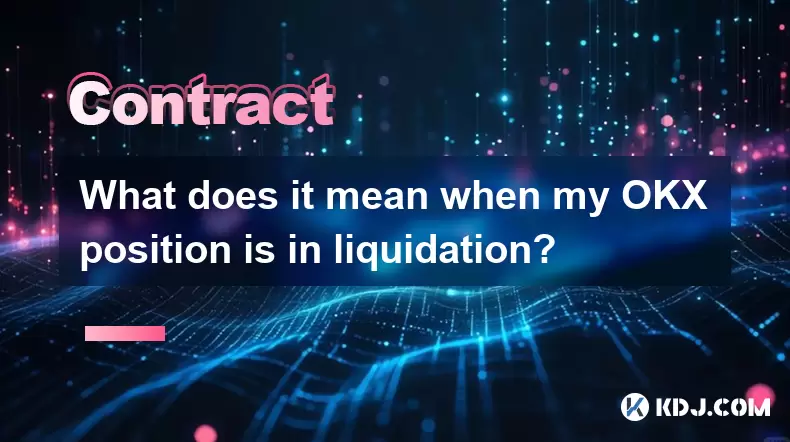-
 Bitcoin
Bitcoin $119900
0.91% -
 Ethereum
Ethereum $4576
8.55% -
 XRP
XRP $3.264
4.05% -
 Tether USDt
Tether USDt $0.9998
-0.05% -
 BNB
BNB $834.7
4.17% -
 Solana
Solana $191.8
9.96% -
 USDC
USDC $0.9998
-0.02% -
 Dogecoin
Dogecoin $0.2363
6.08% -
 TRON
TRON $0.3525
2.56% -
 Cardano
Cardano $0.8419
9.12% -
 Chainlink
Chainlink $23.19
9.97% -
 Hyperliquid
Hyperliquid $44.97
4.53% -
 Stellar
Stellar $0.4489
4.20% -
 Sui
Sui $3.876
6.19% -
 Bitcoin Cash
Bitcoin Cash $618.1
7.14% -
 Hedera
Hedera $0.2617
6.55% -
 Ethena USDe
Ethena USDe $1.000
-0.03% -
 Avalanche
Avalanche $24.61
7.96% -
 Litecoin
Litecoin $131.7
9.52% -
 Toncoin
Toncoin $3.502
3.62% -
 UNUS SED LEO
UNUS SED LEO $9.093
1.32% -
 Shiba Inu
Shiba Inu $0.00001358
5.37% -
 Uniswap
Uniswap $11.50
5.05% -
 Polkadot
Polkadot $4.150
7.77% -
 Dai
Dai $0.9997
-0.05% -
 Cronos
Cronos $0.1650
-0.75% -
 Ethena
Ethena $0.7981
2.06% -
 Pepe
Pepe $0.00001216
8.64% -
 Bitget Token
Bitget Token $4.467
1.74% -
 Aave
Aave $319.2
9.18%
What does it mean when my OKX position is in liquidation?
When your margin falls below maintenance levels, OKX liquidates your position using the mark price to prevent further losses, closing it automatically to protect against negative balances.
Aug 13, 2025 at 01:29 am

Understanding Position Liquidation on OKX
When your OKX position is in liquidation, it means that your margin balance has fallen below the maintenance margin requirement due to adverse price movements in the market. OKX, as a cryptocurrency derivatives exchange, uses a margin-based trading system where traders borrow funds to open leveraged positions. If the market moves against your position and your equity drops to a critical level, the platform automatically closes your position to prevent further losses and protect both the trader and the exchange from negative balances.
This process is known as liquidation, and it is triggered when the liquidation price of your position is reached. The liquidation price is calculated based on your entry price, leverage, fees, and current margin. Once this price level is hit, OKX’s risk engine initiates a forced closure of your position, typically at a market price, which may differ slightly from the theoretical liquidation price due to market volatility or slippage.
How Liquidation Works in Derivatives Trading
In the context of OKX futures or perpetual contracts, liquidation occurs within a collateralized margin system. When you open a leveraged position, you allocate a portion of your account balance as initial margin. As the market fluctuates, your unrealized PnL affects your available margin. If losses accumulate and your margin ratio (equity / required margin) reaches 100%, the position becomes eligible for liquidation.
- The system continuously monitors your position margin and mark price
- When the mark price hits your liquidation price, the liquidation process begins
- OKX uses mark price, not the last traded price, to prevent manipulation and ensure fairness
- The position is either auctioned off or closed via auto-deleveraging (ADL) if insurance funds are insufficient
During extreme volatility, the difference between the last price and mark price can widen, increasing the chance of liquidation even if the order book appears stable. This is why traders are advised to monitor the mark price closely.
Calculating Your Liquidation Price
Understanding how OKX calculates your liquidation price is essential to managing risk. The formula varies slightly depending on whether you hold a long or short position and the type of contract (inverse or linear). For a linear perpetual contract, the liquidation price for a long position can be approximated as:
- Liquidation Price (Long) = Entry Price × (1 - Initial Margin Rate + Maintenance Margin Rate)
- Liquidation Price (Short) = Entry Price × (1 + Initial Margin Rate - Maintenance Margin Rate)
For example, if you open a long position at $50,000 with 10x leverage (10% initial margin), and the maintenance margin rate is 0.5%, your liquidation price would be approximately:
$50,000 × (1 - 0.10 + 0.005) = $45,250
This means if the mark price reaches $45,250, your position will be liquidated. You can view your real-time liquidation price directly in the OKX trading interface under the position details section.
What Happens After Liquidation?
Once your position is liquidated, several automated processes take place:
- Your open position is fully closed at the prevailing market price
- Any remaining margin after covering losses is returned to your account
- If the closure does not cover the full loss, OKX uses insurance funds to absorb the deficit
- In rare cases where insurance funds are depleted, the auto-deleveraging system (ADL) may be triggered, affecting profitable counterparties
After liquidation, your available balance will reflect the remaining equity, which is typically less than your initial margin. You will also see a transaction record in your funding and trade history labeled as "liquidation." It’s important to note that liquidation does not result in debt to OKX — your maximum loss is limited to your position margin.
How to Avoid Liquidation on OKX
Avoiding liquidation requires proactive risk management. Consider the following steps:
- Reduce leverage: Higher leverage increases liquidation risk. Using 5x instead of 50x gives more breathing room
- Increase margin: You can manually add margin to your position by clicking “Add Margin” in the position panel
- Set stop-loss orders: While not a guarantee, stop-losses can close positions before reaching liquidation
- Monitor funding rates: High funding rates can erode margin over time, especially in long-term positions
- Use isolated margin mode: This limits risk to the allocated margin, preventing cross-position liquidation
You can adjust your margin mode between cross and isolated depending on your risk tolerance. In isolated margin, only the assigned funds are at risk. In cross margin, your entire wallet balance acts as collateral, which can prevent premature liquidation but exposes more funds.
Real-Time Monitoring Tools on OKX
OKX provides several tools to help you monitor liquidation risk in real time:
- Liquidation price display in the position panel
- Margin ratio indicator showing your current risk level
- Price alerts that can be set via the app or web platform
- Risk limit settings for multi-tiered margin positions
To access these:
- Log in to your OKX account
- Navigate to the Futures or Perpetuals trading interface
- Open the position tab to view liquidation price and margin ratio
- Click on “Price Alert” to set a notification when the mark price approaches your liquidation level
These tools empower traders to react before liquidation occurs, especially during high-volatility events like macroeconomic announcements or large whale movements.
Frequently Asked Questions
Can I recover a liquidated position on OKX?
No, once a position is liquidated, it is permanently closed. You cannot reverse or reopen the same position automatically. You would need to manually place a new trade if you wish to re-enter the market.
Does OKX notify me before liquidation?
OKX does not send push notifications by default, but you can set up custom price alerts to warn you when the market approaches your liquidation price. Enabling these alerts through the app settings is highly recommended.
Why was my position liquidated even though the market price didn’t reach my liquidation price?
This typically happens because OKX uses the mark price, not the last traded price, to determine liquidation. The mark price includes funding rate adjustments and fair value, which may differ from the spot or order book price.
What is auto-deleveraging (ADL) and how does it affect me?
Auto-deleveraging is a mechanism used when insurance funds are insufficient to cover a liquidated position’s loss. It forcibly closes opposing profitable positions, starting with the highest profitability. If you hold a highly profitable short during a long liquidation wave, your position may be partially closed without warning.
Disclaimer:info@kdj.com
The information provided is not trading advice. kdj.com does not assume any responsibility for any investments made based on the information provided in this article. Cryptocurrencies are highly volatile and it is highly recommended that you invest with caution after thorough research!
If you believe that the content used on this website infringes your copyright, please contact us immediately (info@kdj.com) and we will delete it promptly.
- Unich's OTC Exchange: Surging with $1.2B Volume – What's the Hype?
- 2025-08-13 02:50:11
- MoonBull's Explosive Moves: Your Crypto Whitelist Ticket to Ride!
- 2025-08-13 02:30:11
- MAGACOIN Finance: Don't Miss the Presale Bonus!
- 2025-08-13 02:30:11
- Trump's Crypto Kingdom: $2.4 Billion and Counting
- 2025-08-13 02:50:11
- Solana, LSTs, and SEC Approval: A New Dawn for Crypto?
- 2025-08-13 02:55:12
- Bitcoin's Profit Surge: Unpacking the BTC Value Boom
- 2025-08-13 02:55:12
Related knowledge

Is it possible to adjust the leverage on an open position on KuCoin?
Aug 09,2025 at 08:21pm
Understanding Leverage in KuCoin Futures TradingLeverage in KuCoin Futures allows traders to amplify their exposure to price movements by borrowing fu...

What cryptocurrencies are supported as collateral on KuCoin Futures?
Aug 11,2025 at 04:21am
Overview of KuCoin Futures and Collateral MechanismKuCoin Futures is a derivatives trading platform that allows users to trade perpetual and delivery ...

What is the difference between realized and unrealized PNL on KuCoin?
Aug 09,2025 at 01:49am
Understanding Realized and Unrealized PNL on KuCoinWhen trading on KuCoin, especially in futures and perpetual contracts, understanding the distinctio...

How does KuCoin Futures compare against Binance Futures in terms of features?
Aug 09,2025 at 03:22am
Trading Interface and User ExperienceThe trading interface is a critical component when comparing KuCoin Futures and Binance Futures, as it directly i...

How do funding fees on KuCoin Futures affect my overall profit?
Aug 09,2025 at 08:22am
Understanding Funding Fees on KuCoin FuturesFunding fees on KuCoin Futures are periodic payments exchanged between long and short position holders to ...

What is the distinction between mark price and last price on KuCoin?
Aug 08,2025 at 01:58pm
Understanding the Basics of Price in Cryptocurrency TradingIn cryptocurrency exchanges like KuCoin, two key price indicators frequently appear on trad...

Is it possible to adjust the leverage on an open position on KuCoin?
Aug 09,2025 at 08:21pm
Understanding Leverage in KuCoin Futures TradingLeverage in KuCoin Futures allows traders to amplify their exposure to price movements by borrowing fu...

What cryptocurrencies are supported as collateral on KuCoin Futures?
Aug 11,2025 at 04:21am
Overview of KuCoin Futures and Collateral MechanismKuCoin Futures is a derivatives trading platform that allows users to trade perpetual and delivery ...

What is the difference between realized and unrealized PNL on KuCoin?
Aug 09,2025 at 01:49am
Understanding Realized and Unrealized PNL on KuCoinWhen trading on KuCoin, especially in futures and perpetual contracts, understanding the distinctio...

How does KuCoin Futures compare against Binance Futures in terms of features?
Aug 09,2025 at 03:22am
Trading Interface and User ExperienceThe trading interface is a critical component when comparing KuCoin Futures and Binance Futures, as it directly i...

How do funding fees on KuCoin Futures affect my overall profit?
Aug 09,2025 at 08:22am
Understanding Funding Fees on KuCoin FuturesFunding fees on KuCoin Futures are periodic payments exchanged between long and short position holders to ...

What is the distinction between mark price and last price on KuCoin?
Aug 08,2025 at 01:58pm
Understanding the Basics of Price in Cryptocurrency TradingIn cryptocurrency exchanges like KuCoin, two key price indicators frequently appear on trad...
See all articles

























































































